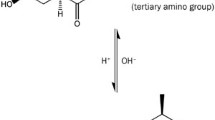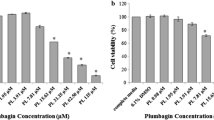Abstract
Purpose. Zonula occludens toxin (Zot), a protein elaborated from Vibrio cholerae, has been shown to be capable of reversibly opening tight junctions. The objective of this work was to determine the stability of Zot and to examine the permeability of a series of molecular weight hydrophilic markers and therapeutic agents in the presence of Zot.
Methods. The transport of molecular weight markers (i.e., PEG 4000, FITC-dextran 10,000 and inulin) and therapeutic agents (i.e., acyclovir, cyclopsorin, paclitaxel, doxorubicin) was evaluated with Zot (0, 1, 2, and 4 μg/mL) using Caco-2 cell monolayers.
Results. Zot was found to be stable over a 10-day period. Significantly higher (p < 0.05) permeability of the molecular weight markers, inulin, and PEG4000 were observed with Zot (4 μg/mL). The transport of each therapeutic marker was significantly increased with paclitaxel displaying a >3-fold enhancement in Papp values with Zot (4 μg/mL). A 30% decrease in transepithelial electrical resistance values was observed, which returned to baseline 30 min after Zot was removed.
Conclusions. Considering the problems of poor oral bioavailability, it is concluded that Zot is a promising drug delivery technology to be used to enhance drug transport across the intestinal mucosa. Future applications are targeted at assessing its usefulness in oral drug delivery using in vivo systems.
Similar content being viewed by others
REFERENCES
P. Artursson. Epithelial transport of drugs in cell culture. I: A model for studying the passive diffusion of drugs over intestinal absorptive (Caco-2) cells. J.Pharm.Sci. 79:476-482 (1990).
P. Artursson and J. Karlsson. Correlation between oral drug absorption in humans and apparent drug permeability coefficients in human intestinal epithelial (Caco-2) cells. Biochem.Biophys.Res.Commun. 175:880-885 (1991).
R. T. Borchardt, P. L. Smith, and G. Wilson. Models for Assessing Drug Absorption and Metabolism, Plenum Press, New York, 1996.
G. T. Knipp, N. F. H. Ho, C. L. Barsuhn, and R. T. Borchardt. Paracellular diffusion in Caco-2 cell monolayers: Effect of perturbation on the transport of hydrophilic compounds that vary in charge and size. J.Pharm.Sci. 86:1105-1110 (1997).
H. L. LueBen, C. O. Rentel, A. F. Kotze, C. M. Lehr, A. G. de Boer, J. C. Verhoef, and H. E. Junginger. Mucoadhesive polymers in peroral peptide drug delivery. IV. Polycarbophil and chitosan are potent enhancers of peptide transport across intestinal mucosae in vitro. J.Control.Release 45:15-23 (1997).
M. M. Thanou, A. F. Kotze, T. Scharringhausen, H. L. Lueben, A. G. de Boer, J. C. Verhoef, and H. E. Junginger. Effect of degree of quanternization of N-trimethyl chitosan chloride for enhanced transport of hydrophilic compounds across intestinal Caco-2 cell monolayers. J.Control.Release 64:15-25 (2000).
P. Artursson, T. Lindmark, S. S. Davis, and L. Illum. Effect of chitosan on the permeability of monolayers of intestinal epithelial cells (Caco-2).Pharm.Res. 287:395-402 (1998).
L. Illum, N. F. Farray, and S. S. Davis. Chitosan as a novel nasal delivery system for peptide drugs. Pharm.Res. 11:1186-1189 (1994).
T. J. Aspden, T. J. Illum, and O. Skaufrud. Chitosan as a nasal delivery system: Evaluation of insulin absorption enhancement and effect on nasal membrane integrity using rat models. Eur.J.Pharm.Sci. 4:23-31 (1996).
M. Sakai, T. Imai, H. Ohtake, H. Azuma, and M. Otagiri. Effects of absorption enhancers on cytoskeletal actin filaments in caco-2 cell monolayers. Life Sci. 63:45-54 (1998).
S. Citi. Protein kinase inhibitors prevent junction dissociation induced by low extracellular calcium in MDCK epithelial cells. J.Cell Biol. 117:169-178 (1992).
J. Hochman and P. Artursson. Mechanisms of absorption enhancement and tight junction regulation. J.Control.Release 29:253-257 (1994).
A. Fasano, B. Baudry, D. W. Pumplin, S. S. Wasserman, B. D. Tall, J. M. Ketley, and J. B. Kaper. Vibrio cholerae produces a second enterotoxin, which affects intestinal tight junctions. Proc.Natl.Acad.Sci.USA 88:5242-5246 (1991).
A. Fasano, C. Fiorentini, G. Donelli, S. Uzzau, J. B. Kaper, K. Margaretten, X. Ding, S. Guandalini, L. Comstock, and S. E. Goldblum. Zonula occludens toxin modulates tight junctions through protein kinase C-dependent actin reorganization, in vitro. J.Clin.Invest. 96:710-720 (1995).
A. Fasano and S. Uzzau. Modulation of intestinal tight junctions by Zonula occludens toxin permits enteral administration of insulin and other macromolecules in an animal model. J.Clin.Invest. 15:1158-1164 (1997).
A. Fasano, S. Uzzau, C. Fiore, and K. Margaretten. The enterotoxic effect of zonula occludens toxin on rabbit small intestine involves the paracellular pathway. Gastroenterology 112:839-846 (1997).
D. S. Cox, H. Gao, S. Raje, K. R. Scott, and N. D. Eddington. Enhancing the permeation of marker compounds and enaminone anticonvulsants across Caco-2 monolayers by modulating tight junctions using zonula occludens toxin. Eur.J.Pharm.Biopharm. 52:145-150 (2001).
G. Borchard, H. L. Luebem, A. G. De Boer, J. C. Verhoef, C. M. Lehr, and J. E. Junginger. The potentil of mucoadhesive polymers in enhancing intestinal peptide drug absorption III. Effects of chitosam glutamate and carbomer on epithelila tight junctions in vitro. J.Control.Release 39:131-138 (1996).
M. Sakai, T. Imai, H. Ohtake, H. Azuma, and M. Otagiri. Simultaneous use of disodium deoxycholate and dipotassium glycyrrhizinate enhances the cellular transport of poorly absorbed compounds across Caco-2 monolayers. J.Pharm.Pharmacol. 28:27-33 (1998).
B. J. Aungst. Intestinal permeation enhancers. J.Pharm.Sci. 89:429-442 (2000).
A. Fasano. Novel approaches for oral delivery of macromolecules. J.Pharm.Sci. 87:1351-1356 (1998).
S. Uzzau, R. Lu, W. Wang, C. Fiore, and A. Fasano. Purification and preliminary characterization of the zonula occludens toxin receptor from human (Caco-2) and murine (IEC6) intestinal cell lines. FEMS Microbiol.Lett 194:1-5 (2001).
E. K. Anderberg, C. Nystrom, and P. Artusson. Epithelial transport of drugs in cell culture. VII: Effects of pharmaceutical surfactants excipients and bile acids on tranepithelial permeability in monolayers of human intestinal epithelial (Caco-2) cells. J.Pharm.Sci. 81:879-887 (1991).
A. Adson, T. J. Raub, P. S Burton, C. L. Barsuhn, A. R. Hilgers, K. L. Audus, and N.F.H. Ho. Quantitative approaches to delineate paracellular diffusion in cultured epithelial cell monolayers. J.Pharm.Sci. 83:1529-1536 (1994).
J. L. Madara, D. Barenberg, and S. Carlsson. Effects of cytochalasin D on occluding junctions of intestinal absorptive cells: Further evidence that the cytoskeleton may influence paracellular permeability and junctional charge selectivity. J.Cell.Biol. 102:2125-2136 (1986).
A. F. Kotze, H. L. Lueben. B. J. de leeuw, A. G. de Boer, J. C. Verhoef, and E. D. Junginger. N-trimethyl chitosan chloride as a potential absorption enhancer across mucosal surfaces: In vitro evaluation in intestinal epithelial cells (Caco-2). Pharm.Res. 14:1197-1202 (1997).
M. Sakai, T. Imai, H. Ohtake, H. Azuma, and M. Otagiri. Effects of absorption enhancers on the transport of model compounds in Caco-2 cell monolayers: Assessment by confocal laser scanning microscopy. J.Pharm.Sci. 86:779-785 (1997).
M. Sakai, T. Imai, H. Ohtake, and M. Otagiri. Cytotoxicity of absorption enhancers in caco-2 cell monolayers. J.Pharm.Pharmacol. 50:1101-1108 (1998).
D. Eagland, N. J. Crowther, and C. J. Butler. Interaction of poly-(oxyethylene) with water as a function of molar mass. Polymer 34:2804-2808 (1993).
K. J. Liu and J. L. Parsons. Solvent effect on the preferred conformation of poly(ethylene glycols). Macromolecules 2:529-533 (1969).
H. Ghandehari, P. L. Smith, H. Ellens, P. Yeh, and J. Kopecek. Size-dependent permeability of hydrophillic probes across rabbit colonic epithelium. J.Pharmacol.Exp.Ther. 280:747-753 (1997).
A. H. Schinkel, E. Wagenaar, C. A. Mol, and L. van Deemter. P-glycoprotein in the blood-brain barrier of mice influences the brain penetration and pharmacological activity of many drugs. J.Clin.Invest. 97:2517-2524 (1996).
Author information
Authors and Affiliations
Corresponding author
Rights and permissions
About this article
Cite this article
Cox, D.S., Raje, S., Gao, H. et al. Enhanced Permeability of Molecular Weight Markers and Poorly Bioavailable Compounds Across Caco-2 Cell Monolayers Using the Absorption Enhancer, Zonula Occludens Toxin. Pharm Res 19, 1680–1688 (2002). https://doi.org/10.1023/A:1020709513562
Issue Date:
DOI: https://doi.org/10.1023/A:1020709513562




